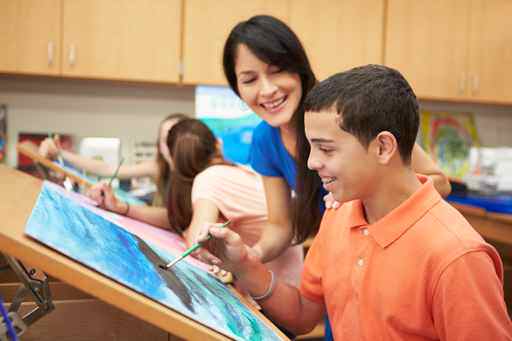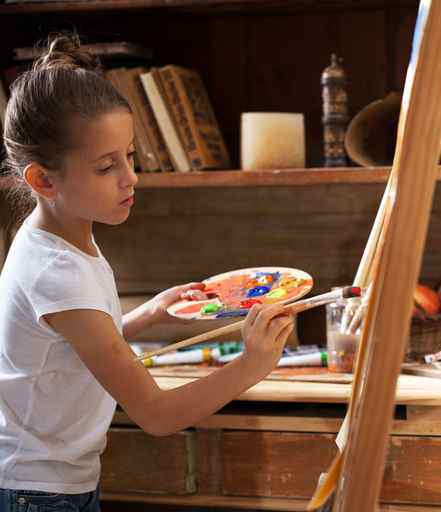In our age when most parents concentrate on giving their children as much as possible in the area of math, science and technology, art education seems to be not on everybody list. But here is the list of skills children learn that will help them tremendously, no matter which career path their take.
Is the study of fine arts important? They engage many areas of the brain and also have far-reaching effects on the learner’s mind (Jensen, 2001). The arts promote the understanding and sharing of culture. They promote social skills that enhance the awareness and respect of others. The fine arts enhance perceptual and cognitive skills. The Burton study of more than 2000 children found that those in the arts curriculum were far superior in creative thinking, self-concept, problem-solving, self-expression, risk-taking, and cooperation than those who were not (Burton et al., 1999).
Fostering creativity won’t just increase your child’s chances of becoming the next Picasso. You’re also helping him develop mentally, socially, and emotionally, says Ecklund-Flores. Creating art may boost young children’s ability to analyze and problem-solve in myriad ways, according to Mary Ann F. Kohl, author of Primary Art: It’s the Process, Not the Product. As kids manipulate a paintbrush, their fine motor skills improve. By counting pieces and colors, they learn the basics of math. When children experiment with materials, they dabble in science. Most important perhaps, when kids feel good while they are creating, art helps boost self-confidence. And children who feel able to experiment and to make mistakes feel free to invent new ways of thinking, which extends well beyond the craft room.
Creativity Being able to think on your feet, approach tasks from different perspectives and think ‘outside of the box’ will distinguish your child from others.

Problem Solving -Artistic creations are born through the solving of problems. How do I turn this clay into a sculpture? How do you create a picture from a blank canvas? How you can use different objects to create object of art.
Motor Skills: Many of the motions involved in making art, such as holding a paintbrush or scribbling with a crayon, are essential to the growth of fine motor skills in young children. In our studio we also do projects that may require use of the hammer, like when assembling a car, or use scissors and paintbrushes.
Improved Academic Performance: Studies show that there is a correlation between art and another achievement. A report by Americans for the Arts states that young people who participate regularly in the arts (three hours a day on three days each week through one full year) are four times more likely to be recognized for academic achievement, to participate in a math and science fair or to win an award for writing an essay or poem than children who do not participate.
Perseverance – When a child picks up a brush the first time, she/he knows that creating like Picasso right away is not an option; however, when that child practices, learns the skills and techniques and doesn’t give up, he/she can archive great result. In an increasingly competitive world, where people are being asked to continually develop new skills, perseverance is essential to achieving success.
This is just a short list of benefit why your child should take art classes. Please check our offering. We are here to help your child to grow into a successful person.
Washington Post – Top Ten Skills children Learn from the Arts
PBS – the importance of Arts in child development
10 studies on the importance of Arts in Education
https://www.kinderart.com/artspeak/important.shtml




